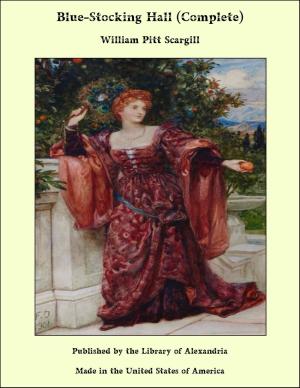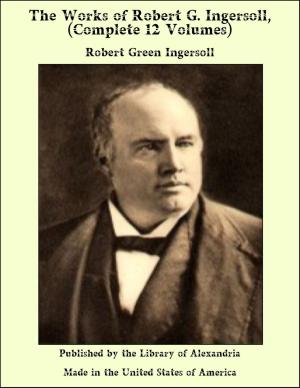Authors and Writers Associated With Morristown With a Chapter on Historic Morristown
Nonfiction, Religion & Spirituality, New Age, History, Fiction & Literature| Author: | Julia Keese Colles | ISBN: | 9781465506818 |
| Publisher: | Library of Alexandria | Publication: | March 8, 2015 |
| Imprint: | Language: | English |
| Author: | Julia Keese Colles |
| ISBN: | 9781465506818 |
| Publisher: | Library of Alexandria |
| Publication: | March 8, 2015 |
| Imprint: | |
| Language: | English |
HISTORIC MORRISTOWN. Throughout our country, there is no spot more identified with the story of the Revolution, and the personality of Washington, than Morristown. Nestled among its five ranges of hills, its impregnable position no doubt first attracted the attention of the commander-in-chief and that of his trusted quartermaster, General Nathaniel Greene. Besides, the enthusiastic patriotism of the men and women of this part of New Jersey was noted far and wide, and the powder-mill of Col. Jacob Ford, Jr., on the Whippany river, where "good merchantable powder," was in course of manufacture,—some of which had probably already been tested at Trenton, Princeton and elsewhere,—was also among the attractions. It was on December 20th, 1776, that Washington wrote to the President of Congress: "I have directed the three regiments from Ticonderoga, to halt at Morristown, in Jersey (where I understand about eight hundred Militia have collected) in order to inspirit the inhabitants and as far as possible to cover that part of the country." (Quoted by Rev. Dr. Tuttle in his paper on "Washington in Morris County," in the Historical Magazine for June 1871.) These were regiments from New England. The British, who were always trying to gain "the pass of the mountains," had made an attempt on the 14th of December, but had been repulsed by Col. Jacob Ford, Jr., with his militia, at Springfield. At this time the village numbered about 250 inhabitants with a populous community of thriving farmers surrounding it. To the north of the town were the estates of the Hathaway and Johnes families; to the east, those of the Fords, who had just erected the building now known as the Headquarters; to the south, those of General John Doughty and to the west, those of Silas Condict and his brothers
HISTORIC MORRISTOWN. Throughout our country, there is no spot more identified with the story of the Revolution, and the personality of Washington, than Morristown. Nestled among its five ranges of hills, its impregnable position no doubt first attracted the attention of the commander-in-chief and that of his trusted quartermaster, General Nathaniel Greene. Besides, the enthusiastic patriotism of the men and women of this part of New Jersey was noted far and wide, and the powder-mill of Col. Jacob Ford, Jr., on the Whippany river, where "good merchantable powder," was in course of manufacture,—some of which had probably already been tested at Trenton, Princeton and elsewhere,—was also among the attractions. It was on December 20th, 1776, that Washington wrote to the President of Congress: "I have directed the three regiments from Ticonderoga, to halt at Morristown, in Jersey (where I understand about eight hundred Militia have collected) in order to inspirit the inhabitants and as far as possible to cover that part of the country." (Quoted by Rev. Dr. Tuttle in his paper on "Washington in Morris County," in the Historical Magazine for June 1871.) These were regiments from New England. The British, who were always trying to gain "the pass of the mountains," had made an attempt on the 14th of December, but had been repulsed by Col. Jacob Ford, Jr., with his militia, at Springfield. At this time the village numbered about 250 inhabitants with a populous community of thriving farmers surrounding it. To the north of the town were the estates of the Hathaway and Johnes families; to the east, those of the Fords, who had just erected the building now known as the Headquarters; to the south, those of General John Doughty and to the west, those of Silas Condict and his brothers















